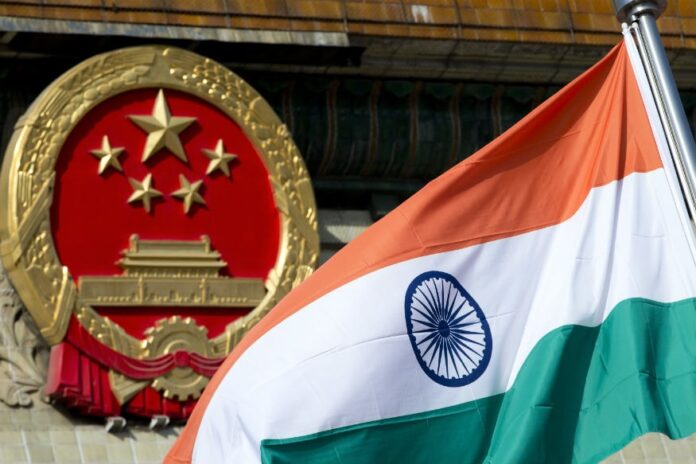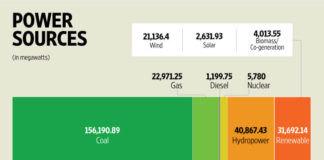By bringing in a slew of business friendly economic measures, drawing on the country’s vast pool of labor and by stitching together vital geopolitical alliances with strong global players, India is looking to encash big time on China’s unpopularity in the post Covid 19 era.
By BalajiSubramanian
As the world got blindsided by China for its failure to report on the outbreak of Wuhan Virus, a grim reality has befallen every government— China has too much power and control over the global supply chain. The dragon has been belligerent towards its neighbor, particularly India. It has bellowed and has threatened almost every nation on earth thinking it can manipulate the global opinion with its economic and military might.
In May, when India was in a total lockdown, Prime Minister NarendraModi said, “India turned Covid-19 crisis into opportunity”. India became world’s fifth-largest economy in 2019 in terms of nominal GDP, overtaking France and the United Kingdom, and has decided to take advantage as pandemic ravages the globe, by quietly drawing up plans to become the leading hub of international supply chains.
“A wise man gets more from his enemies than a fool from his friends.”
No one can fault China for putting itself in a position as the global leader in providing supply chains to the industry. With `whatever it takes attitude’, in just thirty years, China became the second-largest economy. But it was never benevolent with its riches and in the last ten years, its predatory lending and the Belts and Road Initiative (BRI) has left many countries from South East Asia to the continent of Africa and Europe, apprehensive.
The `I want everything attitude’ and the desire to be number one in every business by using any means necessary has not helped China make any new friends. Its desire to rise to its old glory from the hundred years of humiliation it has suffered has blurred the thinking of its leadership, which can be seen by the way the country’s diplomats have been behaving.
India with its large bureaucracy and red tape has more than often been the single greatest obstacle for foreign companies wanting to invest in the country. However, as Modi said, he will not allow the ‘Babus’ as they are colloquially called, to ruin his vision. That is why he is taking a leaf from the Chinese playbook and has elaborate plans to attract investors who are looking for opportunities for manufacturing outside China.
The plan is to attract global mobile handset makers, Chemicals/pharma, consumer durable companies and anyone who wants to set up shop in India. Already the Modi government has imposed a restriction on exports of 26 drugs that are manufactured in India but are dependent on Active Pharmaceutical Ingredients (API).
In an article published in fiercepharma.com, the US Food and Drug Administration (FDA) has no idea how much is the US dependence on Chinese API. Janet Woodcock, FDA’s director of the Center for Drug Evaluation and Research, in congressional testimony in October, said, “The FDA doesn’t know whether Chinese facilities are actually producing APIs, how much they are producing, or where the APIs they are producing are being distributed worldwide, including in the United States … Similarly, we do not have information that would enable us to assess the resilience of the U.S. manufacturing base, should it be tested by China’s withdrawal from supplying the U.S. market.”
Emerging from the lockdown
That is why Modi is going full steam to attract new businesses and is willing to invest 500 million dollars and is prepared to offer tax incentives, easy access to land and other infrastructure ensuring a smooth transition.
As we slowly emerge from the world’s longest and largest shutdowns in history, Modi is prepping Indian economy off the ground and attempting to turn India into the world’s fastest-growing major nation.
As India is all set to become the most populous nation in the world, it is necessary to give special incentives to foreign companies to open their factories and turn India into the world’s premier manufacturing hub.
Modi has a huge challenges in front of him and knows he has to build the infrastructure that has the capability to provide jobs for hundreds of millions of Indians. The world population in 2050 is going to be 9.7 billion and by that time the working-age population in India is projected to be close to one billion.
To even think about such numbers should leave most people stunned, but this is the reality we face as a nation.
In 2014, when Modi assumed office, he started the “Make in India” initiative which was directly pointed towards China. Modi knew of China’s production capability, which is why he now has the means to attract more business.
Getting rid of archaic labor and land laws
Noted economist and former NITI Aayog vice-chairman ArvindPangariya said, “India must complete its reform process in the coming five years.”
He also further stated, “We need firms in these sectors that are globally competitive and capture the space in export markets that China has been quitting due to its high wages. This requires flexible labor and land laws and an ecosystem that is even friendlier to large firms. Experience has shown that public sector ownership creates perverse incentives that have repeatedly manifested themselves in episodes of accumulation of non-performing assets (NPAs) in PSBs while the same has not been a problem in private and foreign banks.”
India has an abundance of cheap labor and already the government has started the process to reform the outdated land and labor regulations. Steps have been taken to provide adequate infrastructure and ensure there is no bureaucratic lethargy that has driven away so many companies.
India sent a positive message to the global businesses when it declared that it has identified and allocated 461,589 hectares of land, which is the size of Luxembourg. Also, investors have been given assurance that round-the-clock power and water supply along with regulatory approvals before the land is handed over are made available.
Epilogue
China wanted to build a necklace of pearls around India to make us submit to its will so it could emerge as the sole superpower in Asia. However, that strategy has now backfired as India has sealed more beneficial geopolitical alliances. India and Australia have just signed a mutual logistics support arrangement (MLSA) that would allow Indian and Australian military ships and aircraft access for refuel and maintenance facilities at each other’s bases.
India has already signed similar agreements with France, United States and South Korea to give China a moment of pause in the Indian Ocean Region (IOR). It is also possible that India could invite Australia for the Malabar naval exercise.
The world has accommodated China for far too long and it has done nothing but take advantage of it. Over the years China has indulged in stealing proprietary information and has violated the World Trade Organization (WTO) anti-dumping protocols.
By providing an ideal environment for investment, India is now giving China a taste of its own medicine as the world grows tired of its predatory behavior. China is paying the price of having a self-centered approach rather than a people-centric approach.
5 things to know about India by 2030:
1. second largest economy (GDP), ahead of US
2. more than 1 billion internet users
3. 77% or population under age 44
4. 80% of population is middle class
5. $5.7 trillion consumer spending
Balaji Subramanian is a freelance writer who writes in the field of mental health, music and politics. He tweets @LaxmanShriram78












